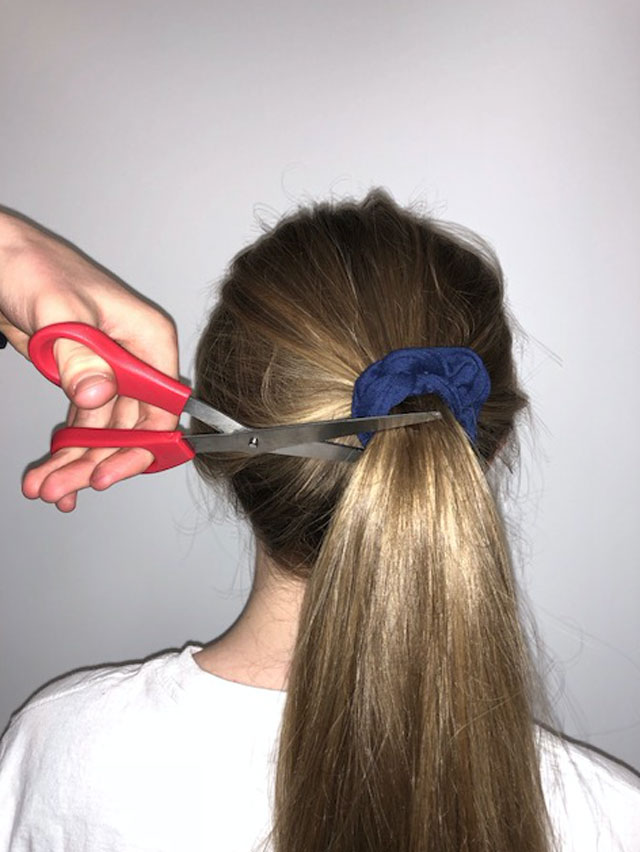Losing the Locks
Millions of people slice their locks each year in order to support various diseases and programs. After making the cut, these are the best places to donate.
Hair loss is a frightening, and sometimes a life changing situation that many young adults and children endure, but donating hair to non-profit organizations can help them feel a little better amidst the painful effects of Cancer treatments, Alopecia, Trichotillomania, burns and other illnesses that cause hair loss.
There are many reasons to donate hair, not all of which are cosmetic. Along with helping people look different, it also helps children feel more like themselves prior to hair loss.
The only problem with donating hair to patients is that they do not always receive donations. This is partly due to limited involvement, but also because of false organizations claiming to give donations for free, but actually making profit from the wigs.
There has been recent controversy over donating to the Locks of Love Organization. Judy Haney, a private hairdresser at Underground Enterprises, does not recommend Locks of Love after hearing that they sometimes sell the hair for profit instead of donating the wigs to hair loss victims. It is estimated that about 80 percent of hair donations to Locks of Love are unusable and six to ten donations are required per wig. According to www.forbes.com, the charity should produce just under 3,000 wigs per year, but in 2011, Locks of Love confirmed that only 317 wigs were produced. This number is excruciatingly low in comparison to how many hair pieces should be produced, so what happens to the unused hair?
There has been recent controversy over whether Locks of Love sells the hair deemed “unusable” as a way to bring in extra profit. Also, there is no guarantee that donations to that organization will amount to anything that can be donated to hair loss victims, since the acceptance rate of 20 percent is so low. The hair length donation requirement is also longer than most other organizations at ten inches, which puts another damper on their already diminishing rates. They do accept gray hair, which is sold to offset manufacturing costs. The total cost of the hair pieces for recipients is determined based on their financial need.
In recent years, Pantene Beautiful Lengths has become a leading organization for hair donations. Senior Allie Regalado donated her hair three years ago to the organization.
“I did a lot of research when deciding where to donate my hair, but the most credible organization I found was Pantene Beautiful Lengths, where I met the eight inch requirement,” Regalado said.
Since donation requirement is only eight inches, it helps them bring in more donations than their competitors who often require ten inches. Hair cannot be chemically treated, bleached or permanently dyed and must be less than five percent gray. Pantene Beautiful Lengths creates and donates wigs for free alongside their partner organization, HairUWear, for women battling cancer.
“It was extremely important to me that the organization I donated to would not make their clients pay for a wig because these women are going through enough as it is,” Regalado said.
Haney said that many of her clients also donate to the Pantene Beautiful Lengths Organization, but she recommends Children With Hair Loss (CWHL) instead because their donations are not just limited to cancer patients.
“Most everyone leaves their hair with me, and I donate it to CWHL,” Haney said.
CWHL is a 501 © 3 non-profit organization for kids 21 and younger. The organization specifically targets families that cannot afford to buy a wig or accessories, which are given to children with medically-related hair loss for free.
I like them the best because they seem to have a better reputation,” Haney said. “They aren’t selling the hair, and it’s specifically for children.”
Donation requirements are eight inches or more. Non-chemically treated hair is preferred, but CWHL accepts any hair donation in good condition.
The Saint Baldrick’s foundation is a group that hosts head-shaving events, where volunteers shave their heads to raise money for cancer research, but do not actually accept hair donations. Hair must be donated to another organization in order to be distributed to hair loss patients.
Donating hair allows hair loss patients to save on medical costs when they receive wigs free of charge, so do the research prior to losing the locks.


